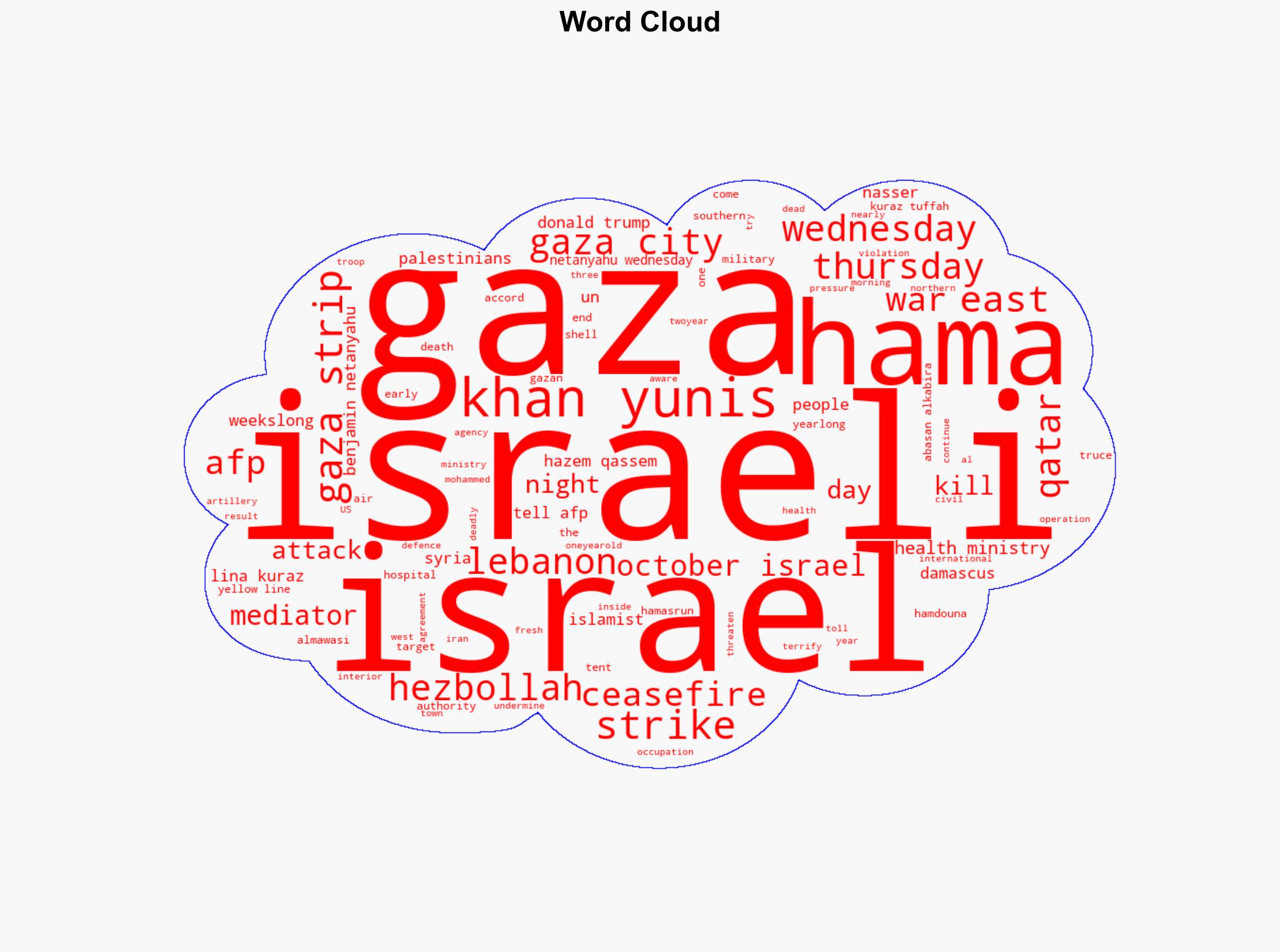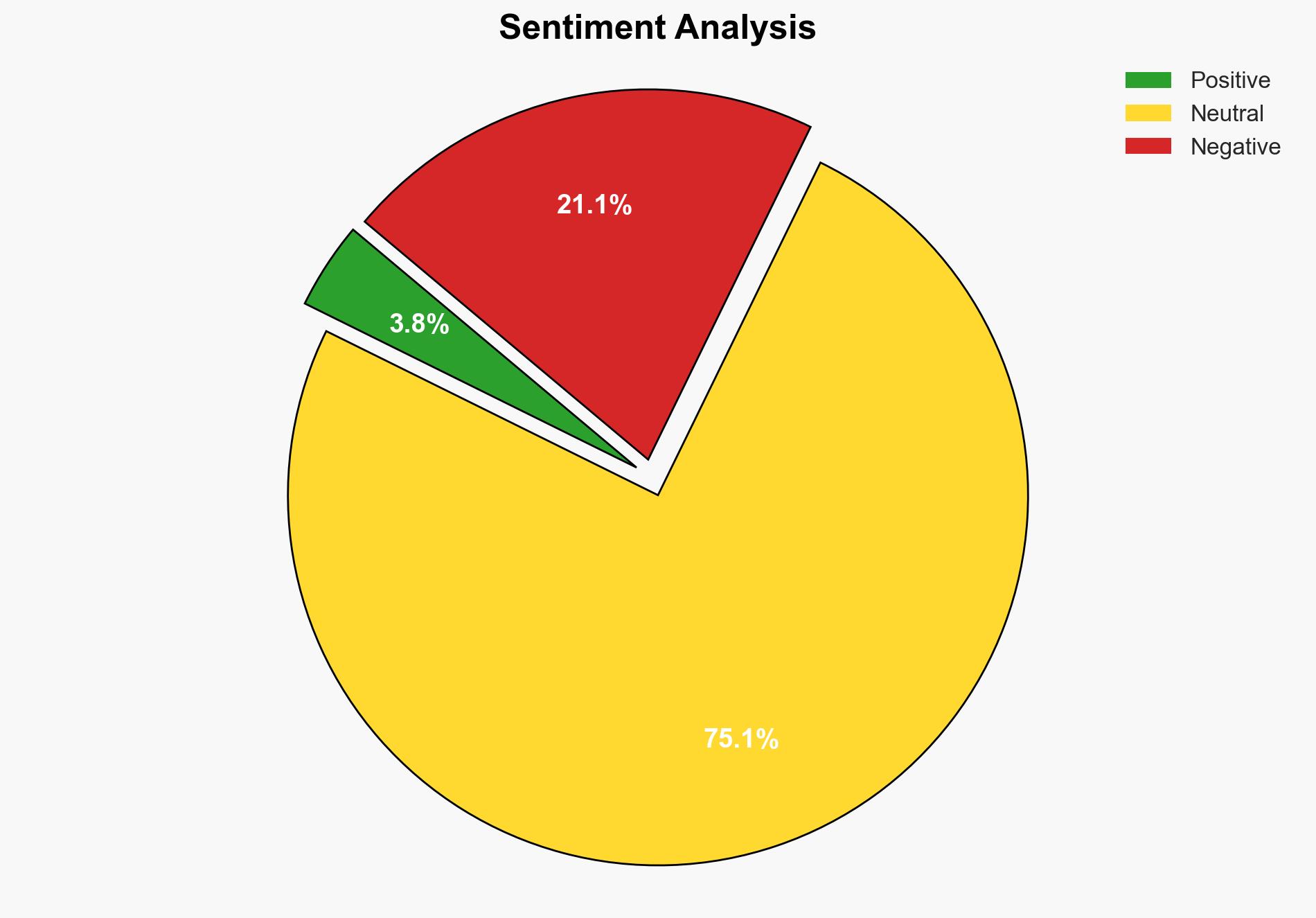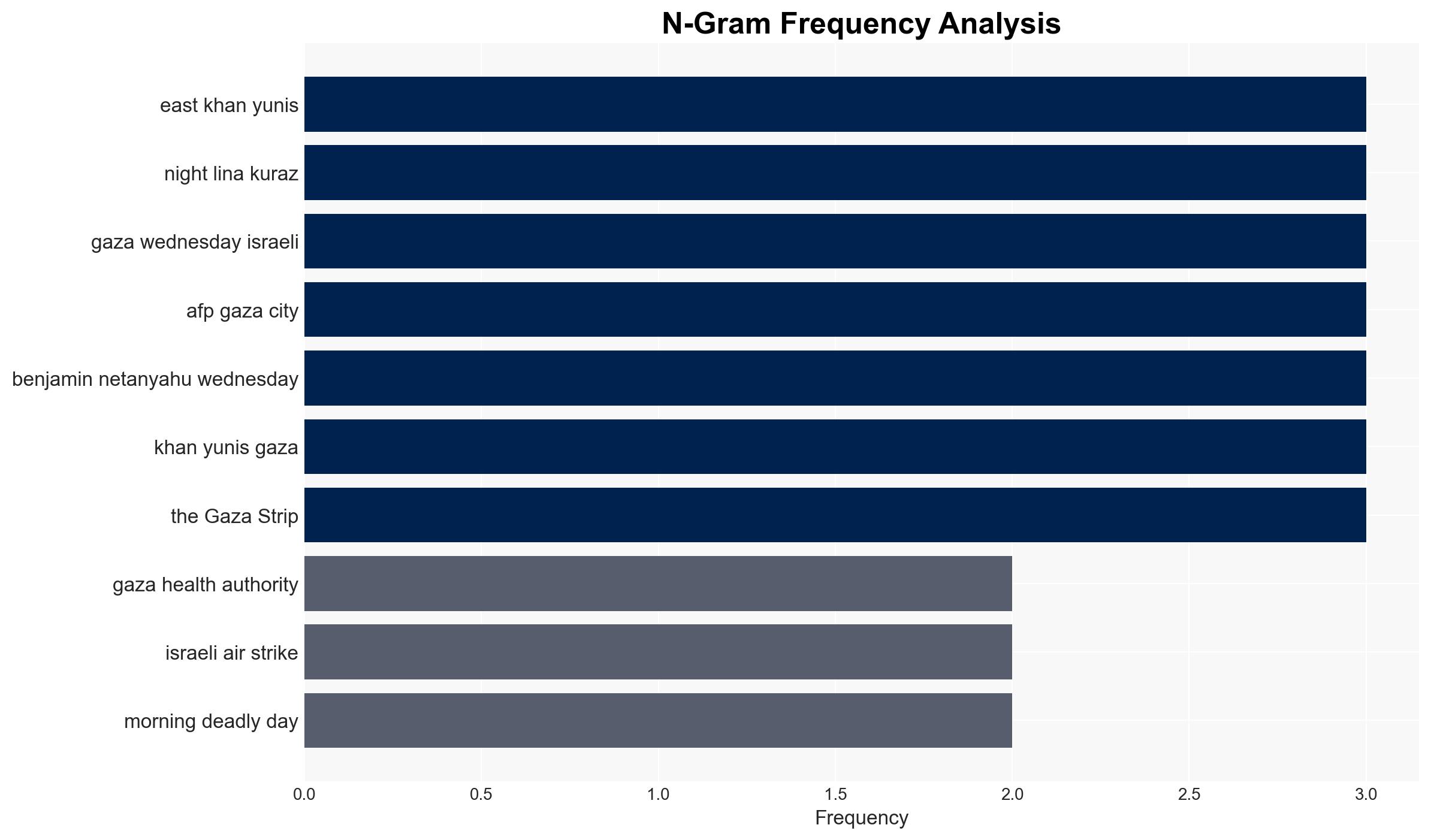Fresh Israeli strikes kill four in Gaza Qatar says truce under threat – The Punch
Published on: 2025-11-20
AI-powered OSINT brief from verified open sources. Automated NLP signal extraction with human verification. See our Methodology and Why WorldWideWatchers.
Intelligence Report:
1. BLUF (Bottom Line Up Front)
The recent Israeli airstrikes in Gaza, resulting in multiple casualties, threaten the fragile ceasefire mediated by Qatar. The most supported hypothesis is that these strikes are a calculated response by Israel to perceived threats from Hamas, aiming to dismantle terror infrastructure. There is a moderate confidence level in this assessment due to the complexity of the geopolitical dynamics and the potential for misinformation. Recommended actions include diplomatic engagement to reinforce the ceasefire and monitoring of regional actors’ military movements.
2. Competing Hypotheses
Hypothesis 1: The Israeli airstrikes are a strategic response to immediate threats from Hamas, intended to dismantle terror infrastructure and prevent future attacks. This hypothesis is supported by Israel’s historical pattern of preemptive strikes and statements from the Israeli military.
Hypothesis 2: The strikes are a demonstration of military strength to deter Hezbollah and other regional actors, signaling Israel’s readiness to act decisively against any perceived threats. This hypothesis is less supported due to the lack of direct evidence linking the strikes to Hezbollah activities.
3. Key Assumptions and Red Flags
Assumptions: It is assumed that Israel’s military actions are based on credible intelligence regarding threats from Hamas. There is also an assumption that Qatar’s mediation efforts are aimed at maintaining regional stability.
Red Flags: The potential for misinformation or propaganda from involved parties could skew perceptions of the conflict. The timing of the strikes, coinciding with political developments in the region, may indicate ulterior motives.
4. Implications and Strategic Risks
The continuation of hostilities could lead to a full-scale conflict, destabilizing the region further. Politically, it may strain Israel’s relations with international mediators and allies. Economically, prolonged conflict could disrupt trade routes and impact regional economies. Informationally, there is a risk of increased propaganda and misinformation campaigns from both sides.
5. Recommendations and Outlook
- Engage in diplomatic efforts to reinforce the ceasefire and ensure compliance from both parties.
- Enhance intelligence-sharing with regional allies to monitor potential escalations.
- Best-case scenario: Ceasefire holds, and diplomatic channels remain open, leading to de-escalation.
- Worst-case scenario: Escalation into a broader regional conflict involving multiple state and non-state actors.
- Most-likely scenario: Continued sporadic violence with intermittent diplomatic interventions to maintain a fragile peace.
6. Key Individuals and Entities
Benjamin Netanyahu (Israeli Prime Minister), Hazem Qassem (Hamas Spokesman), Qatar (Mediator), Israeli Defense Forces (IDF), Hamas, Hezbollah.
7. Thematic Tags
Counter-Terrorism, Middle East Conflict, Ceasefire Negotiations, Regional Stability
Structured Analytic Techniques Applied
- ACH 2.0: Reconstruct likely threat actor intentions via hypothesis testing and structured refutation.
- Indicators Development: Track radicalization signals and propaganda patterns to anticipate operational planning.
- Narrative Pattern Analysis: Analyze spread/adaptation of ideological narratives for recruitment/incitement signals.
Explore more:
Counter-Terrorism Briefs ·
Daily Summary ·
Support us





